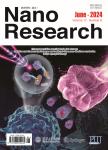Solar thermal swing adsorption on porous carbon monoliths for high-performance CO_(2)capture
作者机构:Institute of Molecular Engineering and Applied ChemistryAnhui University of TechnologyMa’anshan 243002China Division of Nanotechnology and Functional MaterialsDepartment of Materials Science and EngineeringÅngström LaboratoryUppsala UniversityUppsala SE-75121Sweden
出 版 物:《Nano Research》 (纳米研究(英文版))
年 卷 期:2023年第16卷第7期
页 面:10617-10625页
核心收录:
学科分类:081704[工学-应用化学] 07[理学] 070304[理学-物理化学(含∶化学物理)] 08[工学] 0817[工学-化学工程与技术] 0703[理学-化学]
主 题:microporous materials adsorption porous carbon monoliths solar thermal swing adsorption CO_(2)capture
摘 要:Utilizing solar energy for sorbent regeneration during the CO_(2)swing adsorption process could potentially reduce CO_(2)capture *** study describes a new technique—solar thermal swing adsorption(STSA)for CO_(2)capture based on application of intermittent illumination onto porous carbon monolith(PCM)sorbents during the CO_(2)capture *** allows CO_(2)to be selectively adsorbed on the sorbents during the light-off periods and thereafter released during the light-on periods due to the solar thermal *** freestanding and mechanically strong PCMs have rich ultramicropores with narrow pore size distributions,displaying relatively high CO_(2)adsorption capacity and high CO_(2)/N_(2) *** the high CO_(2)capture performance,high solar thermal conversion efficiency,and high thermal conductivity,the PCM sorbents could achieve high CO_(2)capture rate of up to 0.226 kg·kgcarbon^(-1)·h^(-1)from a gas mixture of 20 vol.%CO_(2)/80 vol.%N_(2) under STSA conditions with a light intensity of 1000 W·m^(-2).In addition,the combination of STSA with the conventional vacuum swing adsorption technique further increases the CO_(2)working capacity.



